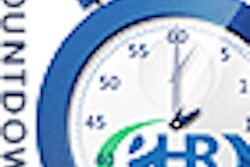The Chicago area has lost more than a quarter of its low-cost dental clinics in recent years, reflecting an alarming decline in the region's system of oral health for the financially distressed, according to a new report released by the Chicago Dental Society (CDS) at its Midwinter Meeting.
The report offers a comprehensive assessment of the region's public dental care and recommends a broad public-private approach to restoring the dental safety net, which has been affected by a number of clinic closings and a limited number of Medicaid providers.
The report documents bleak findings, including the following:
- Public health clinics are underfunded and stretched thin: There is just one dental clinic in Cook County for every 15,700 children.
- There is a lack of oral health advocates in local government: Chicago does not have a dental director. Illinois appointed its first dental director in five years in 2011.
- Dental schools are becoming de facto clinics: As the only dental school in Cook County and Chicago, the University of Illinois at Chicago College of Dentistry has seen an influx of underserved patients.
"The Chicago region is facing the perfect storm of an oral health crisis," noted CDS Secretary Susan Becker Doroshow, DDS, in a press release. "Over the past five years, we've seen a continued shrinking of affordable dental care for low-income individuals and families. ... Without access to routine exams, cleanings, and x-rays, hundreds of thousands of Chicago residents are at risk of suffering needlessly from pain and, ultimately, tooth loss. Oral health care is just not a priority in our public health system, and that's a dangerous mindset, leading to negative effects for our communities."
From 2006-2011, the number of safety net dental clinics in Cook, Lake and DuPage counties dropped 27%. Currently, Chicago County has only 18 public dental clinics with several lacking a dentist and none operated by the city of Chicago. At Cook County Department of Public Health clinics, patients must routinely wait one to three months for an appointment. And last year, a $1.6 billion cut in Illinois' Medicaid program restricted adult dental benefits to emergency tooth extractions only.
The CDS report also evaluates the role of dental providers. Illinois suffers from a shortage of Medicaid dentists, and the new Medicaid rules further limit the number enrolled providers, according to the society. Cost of care also is rising for dentists, many of whom could not sustain their practice if only open to safety net patients. On average, Medicaid dentists are reimbursed 46.7¢ on the dollar compared with the reimbursement of hospitals and pediatricians, with rates of 77¢ and 84¢, respectively. Illinois is ranked 48th overall among U.S. states in reimbursement rates for Medicaid services.
Data from a variety of public sources, including local surveys conducted by CDS, were reviewed and aggregated for the study. The CDS aims to use this collective research to mobilize policymakers, educators, dentists, and patients to develop immediate and long-term solutions to address -- and eventually eradicate -- disparities in Chicago, Cook County, and beyond.
The report authors recommend simple and strategic changes, including the following:
- Greater investments in oral health programs and initiatives
- Increased oral health awareness among at-risk patients
- Incentivizing dentists to work with underserved patients
- Increased workforce of hygienists and assistants
- Improved collection of data
- Boosted advocacy at the city and county levels
The CDS also noted the recent achievements made by oral health advocates, including the establishment of the Chicago Dental Society Foundation, which provides a stable source of income to dental education programs and dental clinics through private and corporate fundraising.
In March 2013, the foundation will open its first-ever free dental clinic in Wheaton. The clinic will serve needy populations in DuPage, Lake, and Cook counties. Services will include oral examinations, prophylaxis, interoral and panoramic x-rays, basic restorations, and extractions.



















